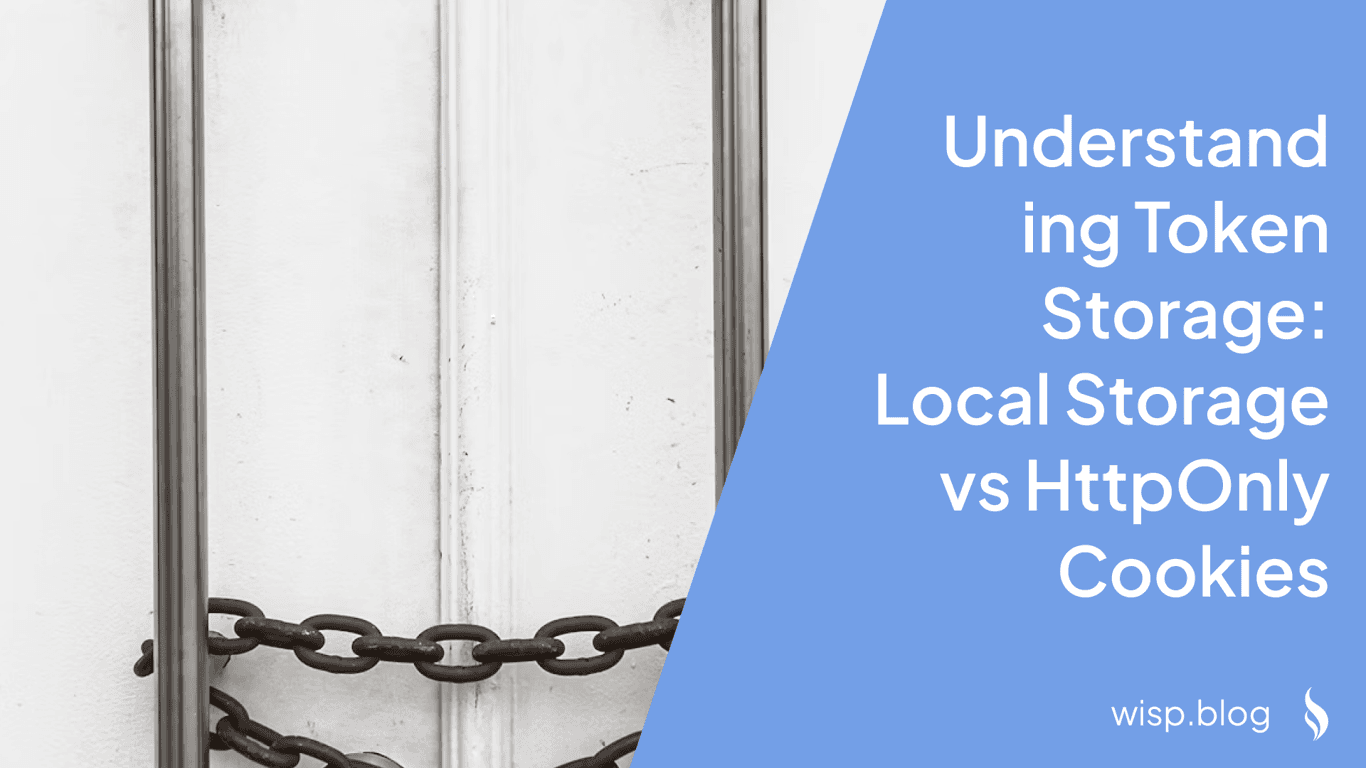 In the realm of web application security, HttpOnly cookies stand as a critical defense mechanism against various client-side attacks. As developers, understanding how to implement and manage these cookies effectively can significantly enhance the security posture of your applications. This article delves into HttpOnly cookies, their security benefits, and best practices for implementation across different frameworks.
In the realm of web application security, HttpOnly cookies stand as a critical defense mechanism against various client-side attacks. As developers, understanding how to implement and manage these cookies effectively can significantly enhance the security posture of your applications. This article delves into HttpOnly cookies, their security benefits, and best practices for implementation across different frameworks.
What Are HttpOnly Cookies?
HttpOnly cookies are special browser cookies with an added security feature that prevents client-side scripts from accessing the cookie data. When a server sets a cookie with the HttpOnly flag, browsers restrict JavaScript code from reading or manipulating that cookie through the document.cookie API.
Set-Cookie: sessionId=abc123; HttpOnly; Secure; SameSite=Strict
The primary purpose of this restriction is to protect sensitive information stored in cookies, such as session identifiers or authentication tokens, from being exposed to potential cross-site scripting (XSS) attacks.
How HttpOnly Cookies Work
When a server sends an HTTP response with a Set-Cookie header that includes the HttpOnly attribute, the browser stores this cookie and automatically includes it in subsequent HTTP requests to the same domain. However, the critical difference is that this cookie remains invisible to any JavaScript running on the page.
Consider this scenario:
A server sets an HttpOnly session cookie during authentication
The browser stores this cookie securely
All future requests to the server automatically include this cookie
Client-side JavaScript cannot read or modify this cookie value
Many developers initially find this concept confusing. As one developer on Reddit asked:
"But if the client's browser cannot access this httpOnly cookie, how do you use this cookie in the header of subsequent responses to authenticate a user session? Can you even use httpOnly cookies for user sessions?"
The answer is simple yet powerful: while JavaScript cannot access these cookies, browsers automatically send them with every request to the origin server. This allows for secure session management without exposing sensitive cookie data to potential XSS attacks.
Security Benefits of HttpOnly Cookies
The implementation of HttpOnly cookies offers several significant security advantages:
1. Protection Against XSS Attacks
Cross-site scripting (XSS) attacks occur when malicious actors inject client-side scripts into web pages viewed by other users. These scripts can access cookies containing sensitive information like session tokens.
HttpOnly cookies mitigate this risk by making cookies inaccessible to JavaScript altogether. Even if an attacker successfully executes malicious code on your site, they cannot directly extract HttpOnly cookie values, protecting authentication credentials and session tokens.
As noted by the OWASP Foundation:
"The HttpOnly flag helps mitigate the risk of client-side script accessing the protected cookie. If the HttpOnly flag is included in the HTTP response header, the cookie cannot be accessed through client-side script."
2. Secure Token Storage
JWT tokens and session identifiers contain critical authentication information. Storing these values in HttpOnly cookies provides a layer of protection that local storage or session storage cannot match.
As one security-conscious developer pointed out on Reddit:
"storing any sensitive data in local storage is yikes... A successful XSS can read/write anything off local Storage."
HttpOnly cookies address this vulnerability by keeping authentication tokens outside the reach of potentially compromised JavaScript code.
3. Automatic Transmission
Unlike manually managed storage methods, cookies are automatically sent with every request to their associated domain. This reduces implementation complexity while maintaining security.
4. Reduced Attack Surface
By removing cookie access from the client-side JavaScript environment, HttpOnly cookies effectively reduce the overall attack surface of your application, making it more resilient against various attack vectors.
Common HttpOnly Cookie Implementation Challenges
Despite their security benefits, developers often encounter specific challenges when implementing HttpOnly cookies:
Cookie Race Conditions
A common issue occurs when redirecting users immediately after setting a cookie, as described by a developer on Reddit:
"The problem seems to be that the redirect to the homepage happens before the cookie is fully set/available."
This race condition happens because the browser might process the redirect before it has fully processed and stored the cookie, resulting in authentication failures after redirects.
Managing Expired Tokens
Another challenge arises when access tokens stored in HttpOnly cookies expire:
"I encounter issues when the access token expires."
Since JavaScript cannot directly access these cookies to check expiration status, applications need server-side logic to handle token refreshing and communicate status to the client.
Cross-Domain Complexities
Managing cookies across different domains or subdomains introduces additional complexity:
"It's possible to run into issues with trying to handle it in two places and possibly two domains."
These challenges require careful planning of cookie domains, paths, and cross-origin resource sharing (CORS) configurations.
Best Practices for HttpOnly Cookies
To maximize security while avoiding common pitfalls, follow these best practices when implementing HttpOnly cookies:
1. Always Pair HttpOnly with Additional Security Flags
HttpOnly alone isn't enough. Always combine it with other important cookie security attributes:
Set-Cookie: sessionId=abc123; HttpOnly; Secure; SameSite=Strict; Path=/; Max-Age=3600
Secure: Ensures cookies are only transmitted over HTTPS
SameSite: Controls cookie behavior in cross-site requests (options: Strict, Lax, or None)
Path: Limits cookie scope to specific URL paths
Max-Age/Expires: Sets appropriate cookie lifetime
2. Implement Proper Token Management
When using JWT tokens or session IDs, consider these token management practices:
Token Length and Complexity: Use cryptographically secure tokens of sufficient length
Short Expiration Times: Set shorter expiration times for sensitive tokens and implement refresh mechanisms
Rotation: Regularly rotate tokens to limit the impact of potential compromise
3. Create Dedicated API Endpoints for Cookie Management
To avoid race conditions and improve cookie handling, create specific API endpoints for cookie-related operations. This centralized approach provides better control over the timing of operations.
For example, in a Next.js application, you might create a dedicated API route for authentication:
// pages/api/auth/login.js
export default async function handler(req, res) {
if (req.method === 'POST') {
try {
// Validate credentials
const { username, password } = req.body;
const user = await authenticateUser(username, password);
if (user) {
// Generate session token
const token = generateSessionToken(user);
// Set HttpOnly cookie
res.setHeader('Set-Cookie',
`sessionToken=${token}; HttpOnly; Secure; SameSite=Strict; Path=/; Max-Age=3600`
);
// Return success without exposing token in response body
return res.status(200).json({ success: true, userId: user.id });
}
return res.status(401).json({ success: false, message: 'Authentication failed' });
} catch (error) {
return res.status(500).json({ success: false, message: 'Server error' });
}
}
return res.status(405).json({ success: false, message: 'Method not allowed' });
}
4. Handle Cookie Race Conditions
To prevent race conditions between setting cookies and redirecting users, consider these approaches:
Server-side redirection after confirming the cookie is set
Delayed client-side redirection using a short timeout
Two-step process: Set cookie in one request, then redirect in a subsequent request
As one developer suggested:
"Add the cookie to the auth response, only redirect on success. Check the response on the network if the cookie is set."
5. Create a Specialized Authentication Utility
For client-side components that need to make authenticated requests, create a specialized authFetch function that handles the complexities of working with HttpOnly cookies:
// utils/authFetch.js
export async function authFetch(url, options = {}) {
try {
// Make request with credentials to include cookies
const response = await fetch(url, {
...options,
credentials: 'include', // Important for including cookies
});
// Handle 401 Unauthorized (expired token)
if (response.status === 401) {
// Attempt token refresh
const refreshResult = await fetch('/api/auth/refresh', {
method: 'POST',
credentials: 'include',
});
if (refreshResult.ok) {
// Retry the original request after refresh
return fetch(url, {
...options,
credentials: 'include',
});
} else {
// Redirect to login if refresh fails
window.location.href = '/login';
throw new Error('Authentication required');
}
}
return response;
} catch (error) {
console.error('Auth fetch error:', error);
throw error;
}
}
This utility can be used throughout your application for any requests that require authentication:
import { authFetch } from '../utils/authFetch';
// In a client component
const fetchUserData = async () => {
try {
const response = await authFetch('/api/user/profile');
if (response.ok) {
const data = await response.json();
setUserData(data);
}
} catch (error) {
console.error('Failed to fetch user data:', error);
}
};
6. Implementing Session Management in Next.js
For Next.js applications, creating a custom useSession hook can simplify working with HttpOnly cookies:
// hooks/useSession.js
import { useState, useEffect } from 'react';
import { authFetch } from '../utils/authFetch';
export function useSession() {
const [session, setSession] = useState(null);
const [loading, setLoading] = useState(true);
const [error, setError] = useState(null);
useEffect(() => {
const fetchSession = async () => {
try {
const response = await authFetch('/api/auth/session');
if (response.ok) {
const data = await response.json();
setSession(data);
} else {
setSession(null);
}
} catch (err) {
setError(err);
setSession(null);
} finally {
setLoading(false);
}
};
fetchSession();
}, []);
const refreshSession = async () => {
setLoading(true);
try {
const response = await authFetch('/api/auth/refresh');
if (response.ok) {
const data = await response.json();
setSession(data);
return true;
}
return false;
} catch (err) {
setError(err);
return false;
} finally {
setLoading(false);
}
};
return { session, loading, error, refreshSession };
}
This hook can be used in client components to access session information and handle authentication state:
import { useSession } from '../hooks/useSession';
function ProfilePage() {
const { session, loading, error } = useSession();
if (loading) return <div>Loading...</div>;
if (error) return <div>Error loading session</div>;
if (!session) return <div>Please log in to view your profile</div>;
return (
<div>
<h1>Welcome, {session.user.name}</h1>
<p>Email: {session.user.email}</p>
{/* Additional profile content */}
</div>
);
}
Implementing HttpOnly Cookies in Different Environments
Server-Side Implementation in Node.js/Express
// Express.js example
app.post('/api/login', async (req, res) => {
const { username, password } = req.body;
try {
// Validate user credentials
const user = await validateUser(username, password);
if (user) {
// Generate JWT token
const token = jwt.sign(
{ userId: user.id, permissions: user.permissions },
process.env.JWT_SECRET,
{ expiresIn: '1h' }
);
// Set HttpOnly cookie
res.cookie('auth_token', token, {
httpOnly: true,
secure: process.env.NODE_ENV === 'production',
sameSite: 'strict',
maxAge: 3600000, // 1 hour in milliseconds
path: '/'
});
return res.status(200).json({ success: true, userId: user.id });
}
return res.status(401).json({ success: false, message: 'Invalid credentials' });
} catch (error) {
console.error('Login error:', error);
return res.status(500).json({ success: false, message: 'Server error' });
}
});
Implementation in .NET Core
[HttpPost("login")]
public async Task<IActionResult> Login(LoginModel model)
{
var user = await _userManager.FindByNameAsync(model.Username);
if (user != null && await _userManager.CheckPasswordAsync(user, model.Password))
{
var claims = new List<Claim>
{
new Claim(ClaimTypes.Name, user.UserName),
new Claim(ClaimTypes.NameIdentifier, user.Id)
// Add additional claims as needed
};
var key = new SymmetricSecurityKey(Encoding.UTF8.GetBytes(_configuration["JWT:Secret"]));
var credentials = new SigningCredentials(key, SecurityAlgorithms.HmacSha256);
var token = new JwtSecurityToken(
issuer: _configuration["JWT:ValidIssuer"],
audience: _configuration["JWT:ValidAudience"],
claims: claims,
expires: DateTime.Now.AddHours(1),
signingCredentials: credentials
);
var tokenString = new JwtSecurityTokenHandler().WriteToken(token);
// Set HttpOnly cookie
Response.Cookies.Append("AuthToken", tokenString, new CookieOptions
{
HttpOnly = true,
Secure = true,
SameSite = SameSiteMode.Strict,
Expires = DateTimeOffset.Now.AddHours(1)
});
return Ok(new { userId = user.Id });
}
return Unauthorized();
}
Implementation in PHP
// PHP example
function login($username, $password) {
$user = validateCredentials($username, $password);
if ($user) {
// Generate JWT token
$payload = [
'user_id' => $user['id'],
'permissions' => $user['permissions'],
'exp' => time() + 3600 // 1 hour expiration
];
$jwt = JWT::encode($payload, $_ENV['JWT_SECRET'], 'HS256');
// Set HttpOnly cookie
setcookie(
'auth_token',
$jwt,
[
'expires' => time() + 3600,
'path' => '/',
'domain' => $_SERVER['HTTP_HOST'],
'secure' => true,
'httponly' => true,
'samesite' => 'Strict'
]
);
return ['success' => true, 'user_id' => $user['id']];
}
return ['success' => false, 'message' => 'Authentication failed'];
}
Security Considerations Beyond HttpOnly
While HttpOnly cookies provide significant protection against XSS attacks, they are not a complete security solution. Consider these additional security measures:
1. Protection Against CSRF Attacks
HttpOnly cookies are still vulnerable to Cross-Site Request Forgery (CSRF) attacks. Implement CSRF protection through:
CSRF tokens in forms and AJAX requests
SameSite cookie attribute (preferably set to 'Strict' or 'Lax')
Proper validation of request origins
2. Content Security Policy (CSP)
Implement a strong Content Security Policy to further mitigate XSS risks:
Content-Security-Policy: script-src 'self'; object-src 'none'; frame-ancestors 'none';
3. Secure Cookie Transport
Always use the Secure flag to ensure cookies are only sent over HTTPS connections, preventing interception through man-in-the-middle attacks.
4. Cookie Prefixing
Consider using cookie prefixes for additional security:
__Secure-prefix for cookies that must be secure__Host-prefix for cookies that must be secure and host-only
Set-Cookie: __Host-SessionId=abc123; HttpOnly; Secure; Path=/; SameSite=Strict
Conclusion
HttpOnly cookies provide a robust security mechanism for protecting sensitive authentication data from client-side script access. By preventing JavaScript from reading cookie values, they significantly reduce the risk of session hijacking through XSS vulnerabilities.
Implementing HttpOnly cookies requires careful attention to details like race conditions, token management, and cross-domain complexities. By following the best practices outlined in this article and creating dedicated API endpoints for cookie management, developers can enhance application security while providing a seamless user experience.
Remember that HttpOnly cookies are just one component of a comprehensive web application security strategy. They should be implemented alongside other security measures such as CSRF protection, content security policies, and proper input validation to create a defense-in-depth approach to application security.
By understanding the purpose, benefits, and implementation details of HttpOnly cookies, developers can make informed decisions about authentication and session management approaches that balance security requirements with user experience considerations.



